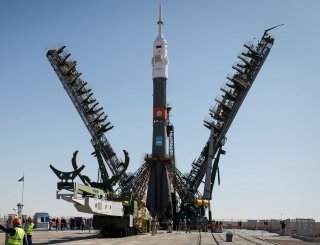Space Wars: Meet Russia’s New Anti-Satellite Satellites (Yes, This Is Real)
A recent Russian satellite test may signal the end of arms control in space.
U.S. Space Command gave details about an anti-satellite weapon test Russia recently conducted. During the test, a Russian satellite, named Cosmos 2543, released an object, likely another small satellite, in close proximity to a Russian satellite as part of a “non-destructive test of a space-based anti-satellite weapon.”
This isn’t the first time that Russia has conducted an unusual maneuver near a satellite. “The Russian satellite system used to conduct this on-orbit weapons test is the same satellite system that we raised concerns about earlier this year, when Russia maneuvered near a U.S. government satellite,” the Commander of U.S. Space Command and U.S. Space Force Chief of Space Operations General John W. “Jay” Raymond explained.
General Raymond elaborated that this test was “further evidence of Russia’s continuing efforts to develop and test space-based systems, and consistent with the Kremlin’s published military doctrine to employ weapons that hold U.S. and allied space assets at risk.”
In the previous incident, one satellite was observed separating into a pair of satellites—Cosmos 2542 and the Cosmos 2543—and trailed an observation and reconnaissance satellite operated by the United States’ secretive National Reconnaissance Office. The satellite, known as USA 224, is about the size of a bus, and is believed to have an array of high-definition cameras and other observational equipment onboard.
The separating satellites are known colloquially as “nesting dolls” after the stackable wooden Matryoshka doll souvenirs. In a separate statement, General Raymond characterized the satellites as an offensive weapon system, saying, “the satellites exhibited characteristics of a weapon system when one of those satellites launched a high-speed projectile into space.”
The Russian Ministry of Defense released a statement saying that the separating satellites were part of an experiment for assessing the condition of domestic Russian satellites—though the veracity of this statement is difficult to ascertain.
The threat that offensive satellites pose to the United States is difficult to overstate. A number of Americans rely on GPS for everything from providing directions to issuing time stamps for credit card transactions. Weather satellites transmit valuable data Earthward, as do communications satellites that are used for the mundane, like ordering a pizza, or for emergencies, like 911 calls—a reliance that Russia apparently would like to exploit.
Arms Control No More?
What this means for arms control in space is difficult to plumb. On opinion expressed by Dr. Christoper Ford, the U.S. Assistant Secretary of State, was that in the zero-sum game of international relations, Russia stands to gain.
In a Space Command release, Dr. Ford explained that “this event highlights Russia’s hypocritical advocacy of outer space arms control, with which Moscow aims to restrict the capabilities of the United States while clearly having no intention of halting its own counterspace program—both ground-based anti-satellite capabilities and what would appear to be actual in-orbit anti-satellite weaponry.”
Regardless, Russia is demonstrating in no uncertain terms that it has the ability to maneuver some of its satellites close to inspect others—an ability that could very easily be used to probe other country’s satellites or destroy them.
Caleb Larson is a defense writer for the National Interest. He holds a Master of Public Policy and covers U.S. and Russian security, European defense issues, and German politics and culture.
Image: Reuters

